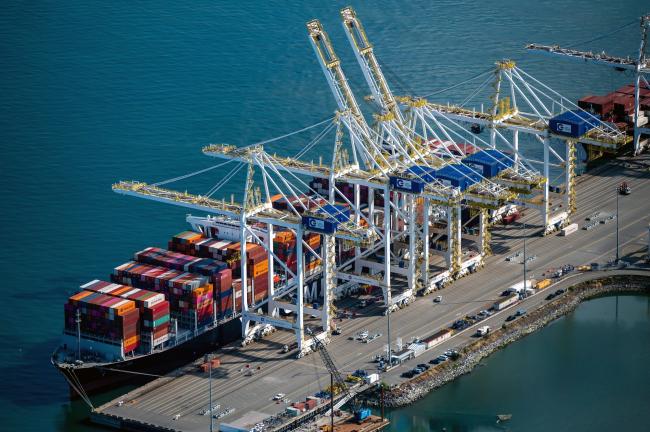(Bloomberg) -- The Canadian economy accelerated in the second quarter as the nation benefited from surging commodity prices and got a boost from the lifting of Covid-related lockdowns, though signs are emerging momentum is waning.
Gross domestic product rose at a 3.3% annualized rate after a revised 3.1% increase in the first three months of the year, Statistics Canada reported Wednesday. Growth was led by stronger household consumption and business spending on inventories.
The numbers paint a picture of an economy running hot for much of the first half of 2022, even as the U.S. and other countries stumbled, but is now entering a period of much slower growth in the face of decades-high inflation and rising interest rates.
The latest monthly readings show the economy contracted by 0.1% in July, after a weak 0.1% gain in June and flat growth in May, adding to evidence of slowing economic momentum. Economists anticipate Canada’s growth rate will fall to below 1.5% annualized in the second half of this year and into 2023, with some even predicting a recession possible amid one of the most aggressive hiking cycles ever by the Bank of Canada.
A median estimate in a Bloomberg survey of economists expected a 4.4% annualized growth rate in the second quarter. The Bank of Canada forecast 4.0% in their July Monetary Policy Report.
The weaker-than-expected reading reflects strong growth in imports. The part of household and business spending that is used to buy goods and services from other countries is not counted as domestic output.
Rate Hikes
The nation’s central bank has already increased its overnight policy rate by 2.25 percentage points since March, and is expected to continue hiking through the rest of the year. Investors are almost fully pricing in another 75 basis point increase at the Bank of Canada’s next policy decision on Sept. 7.
Canadians are also facing higher prices for virtually everything, with wage gains not keep up with the pace of inflation, which has hovered around 8% in recent months. To be sure, higher prices didn’t stop households from accelerating their spending in the first half. Household consumption jumped by an annualized 9.7% in the second quarter.
Canada’s resource-rich economy in the first half also benefited from surging commodity prices, driving incomes higher and stoking demand.
Growth in nominal output rose 4.2% on a non-annualized basis due to rising prices for national produced goods and services -- the strongest increase outside of the pandemic recovery since 1981. Worker compensation was up a robust 2.0%.
Businesses took advantage of the buoyant demand and strong commodity prices to accumulate inventories, totaling C$47 billion. Inventory buildup was the biggest contributor to growth in the second quarter.
Business investment in structures and machinery and equipment also came in at a very strong 14% annualized pace.
US Decoupling
The strong demand helped Canada experience a rare economic decoupling from the U.S. Over the past six months, the U.S. expansion went into reverse with back-to-back quarterly contractions, even as Canada record one of the strongest six-month periods of growth in recent decades.
But that outperformance, at least compared to the U.S., represents in part a catching-up. Canada suffered through more strict lockdowns than the U.S., where the full recovery in GDP was faster.
Economists anticipate the Canadian and U.S. economies will converge in the second half of this year, and grow by about the same pace over the next couple of years.
In Canada, the impact of higher interest rates is already being felt, the data show. Residential investment fell by an annualized 28% rate in the second quarter, the second-largest drop since the early 1960s. The largest quarterly decline in housing investment was during the depths of the pandemic.
The bulk of the gains in household consumption, meanwhile, were in services and semi-durables. Spending on interest-sensitive durable goods fell.
Trade Drag
Strong consumer demand in the first half, meanwhile, isn’t fully translating into more economic activity. Much of the spending is going abroad, with imports shooting up an annualized 31% in the second quarter.
While exports also jumped by an annualized 11%, shipments abroad failed to keep up with the pace of imports. Overall, the trade sector acted as a drag on growth, lowering growth by an annualized 5.2 percentage points.
©2022 Bloomberg L.P.

